DIY: How to Naturally Get Rid Of Silverfish Infestation For Good
Easy Ways To Get Rid Of Silverfish
No one wants to find insects or pests living in their home, but maybe you’ve started to notice troublesome signs around the house. If you’ve found yellow stains on fabric items, small black droppings on your floors and shelves, or damaged book bindings, these are all signs that your space is infested with silverfish.
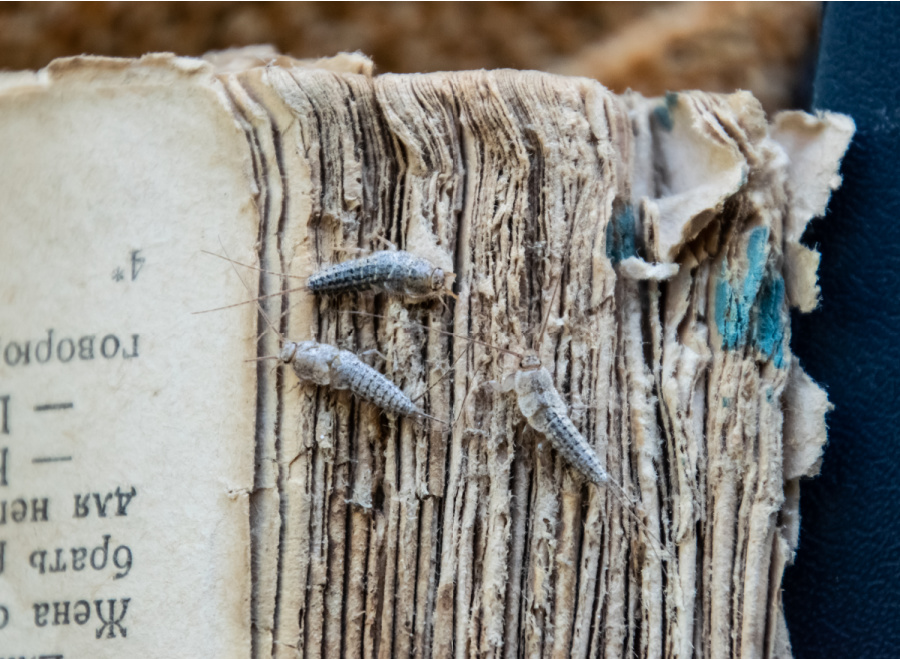
This common pest is a standard sight in modern homes. However, you never want to see these squirmy bugs in your house. Luckily you can explore natural strategies to get rid of silverfish in your home for good.
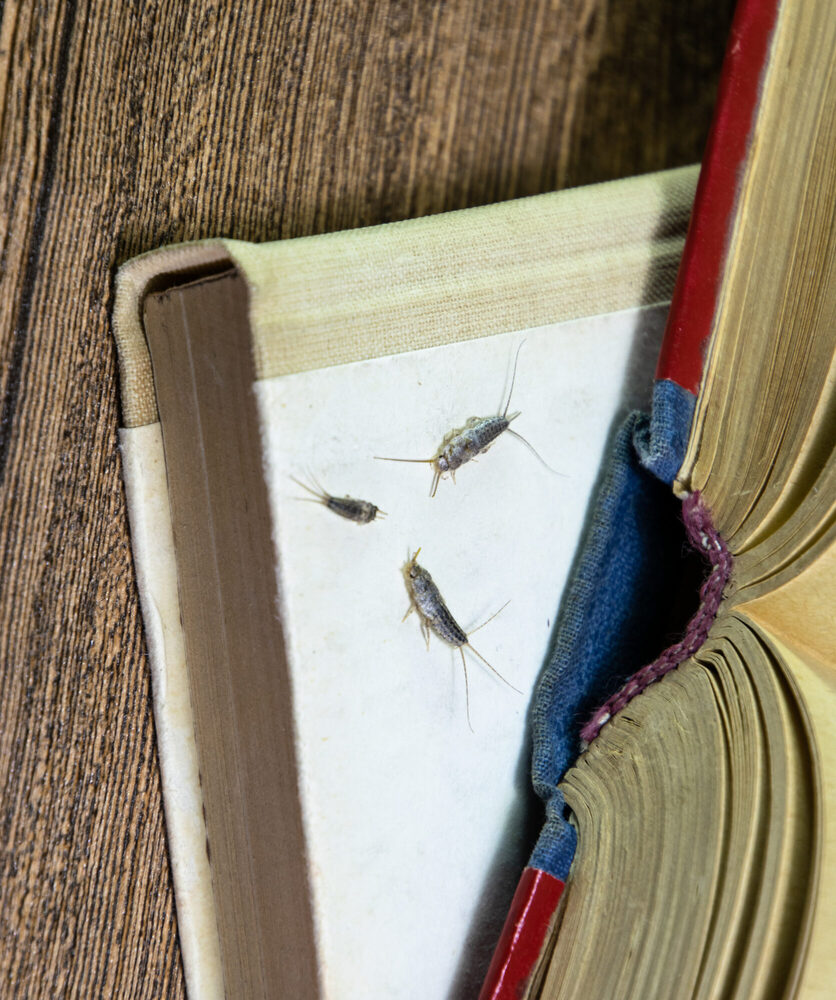
Learn more about Lepisma saccharina or the common silverfish, including what attracts them to your home, whether they’re dangerous to your family, and how to safely and naturally solve any silverfish problem.
What Are Silverfish?
Silverfish is the common name for insects scientifically known as Lepisma saccharinum. These wingless insects live all over the planet and can adapt to many different conditions.
They have a range of food sources including many common household items. This versatility explains why silverfish can spread and thrive throughout any home.
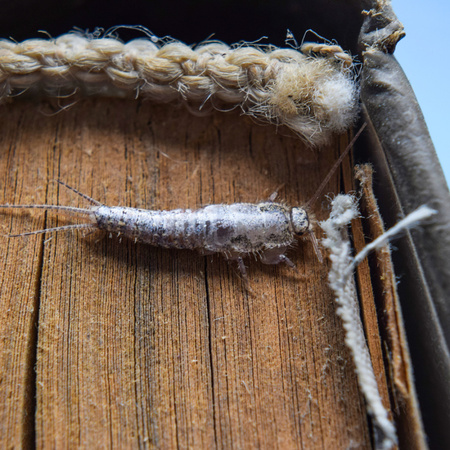
Also known as paper fish or bristle tails, silverfish are easy to identify on sight. They have a unique appearance that stands out from other common pests like grasshoppers or cockroaches.
The name “silverfish” is a good description of these creatures. Their bodies are curved, giving them a fish-like appearance when they’re standing still or moving.
If you ever see a silverfish run, you’ll notice that it moves from side to side, just like a fish swimming through water.
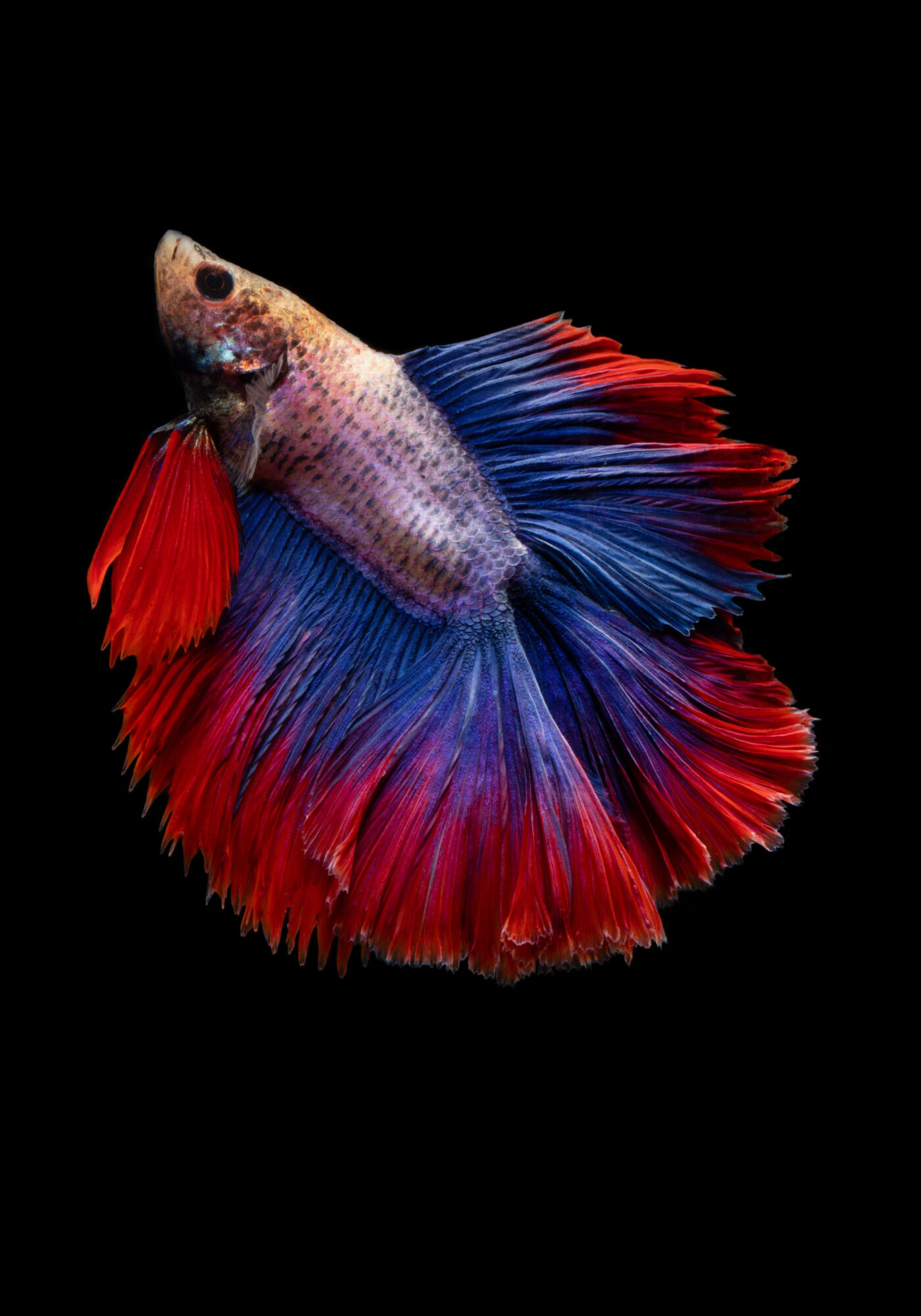
Want to know how to get rid of mosquitoes naturally? Click here.
Adult silverfish also earn their name because they develop shining silver exoskeletons. These insects have long antennae, short tail-like appendages, and tiny bristles on their back.
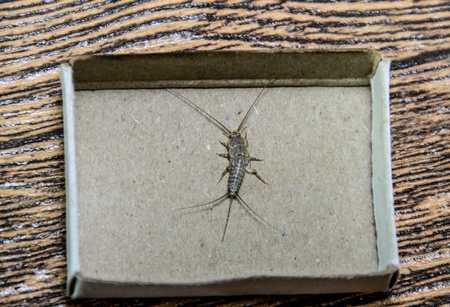
Thankfully silverfish don’t grow to a very large size. Most remain shorter than one inch for their entire lives.
The Life Cycle Of A Silverfish
Silverfish live for a long time, especially compared to other insects and pests. Silverfish can live for up to eight years during ideal conditions.
These insects can reproduce several times throughout their lives. Unlike other pests, silverfish don’t have endless offspring.
Female silverfish usually lay fewer than 100 eggs during their entire lives.

They can also only lay up to 60 eggs at a time. A few silverfish can still spawn a large infestation, but you won’t face the same numbers from more prolific bugs.
Once a silverfish lays eggs, the young can hatch in two weeks to two months.
This timeline all depends on the amount of moisture, light, and other factors.
Newly hatched silverfish are known as nymphs. A silverfish nymph has the same body type and behaviors as adult insects. However, there are some noticeable differences.
Young silverfish don’t develop the distinctive silver coloring until they’re mature. Nymphs are also much smaller than adults.
Silverfish love warm and damp environments. People who live in warm, humid places are more likely to struggle with silverfish than people in colder, drier parts of North America.

Silverfish living in very cold and dry climates can take up to two years to mature. Species of silverfish in warm, damp, or tropical areas grow up much faster.
These pests can grow up and be ready to mate in only three months.
Female silverfish reproduce slowly compared to some other pests, but they can still infest your home. If you live in a warm, wet location, one female silverfish can produce 60 more in only four months.
When the offspring grow and reproduce, you can face thousands of silverfish in less than a year.
The Natural History Of Silverfish
As a species, silverfish have thrived for a very long time.
Some research has found silverfish fossils more than 400 million years old. These insects have been around for so long because they’re well adapted to a range of habitats.
Silverfish can survive off a wide variety of foods, tolerate high and low temperatures, and can even live in dry, unfriendly climates.
Silverfish have also succeeded as a species because they like to stay hidden. These pests are nocturnal insects, which means that they rest during the day and are active at night.

They avoid well-lit spaces and prefer dark areas.
If you notice a silverfish in a dry, bright area of your house, you can count on large infestations in your dark and damp spaces.
Are Silverfish Dangerous?
Silverfish are unpleasant, but they are not dangerous in most cases. These creatures are naturally shy and try to avoid people. Silverfish don’t bite people.
Their jaws are too weak to break the skin. They also don’t transmit disease, carry parasites, or lay eggs in your ears. Most myths about silverfish are false.
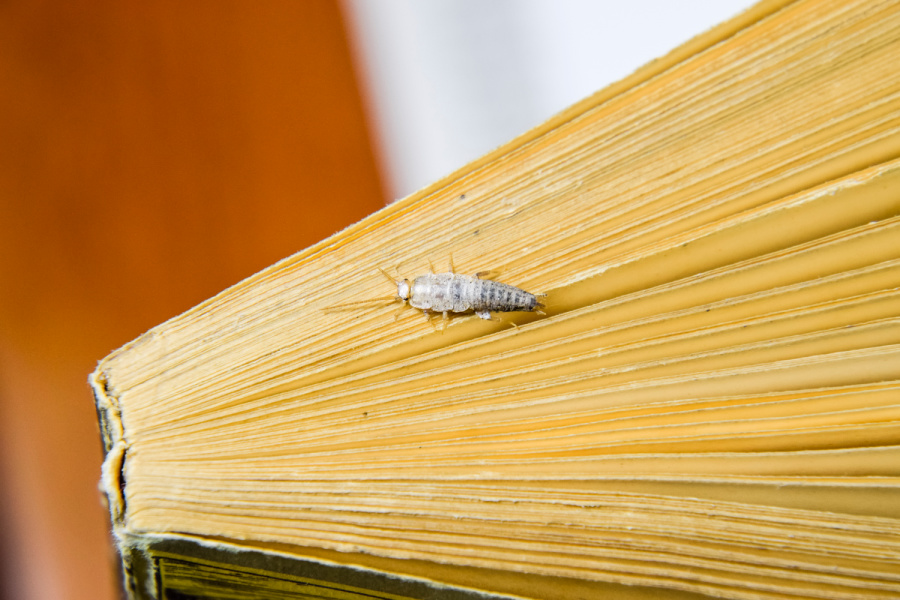
There are only a few scenarios where silverfish can harm your family. The main risk is to people with allergic reactions to silverfish.
Some people are allergic to silverfish droppings, skin, and the bodies of dead insects. Most allergy sufferers experience coughing, sneezing, nasal drainage, or an itchy throat.
These symptoms can be minor, but some people have more severe reactions.
If your family has allergies or asthma, it’s a good idea to fight silverfish infestations.
Silverfish can also cause problems for animals that like to eat bugs. Some pets love to stalk, kill, and eat insects. This behavior is driven by natural hunting urges and is normally a healthy activity.

Silverfish aren’t dangerous in small amounts. Dogs, cats, and other household pets can eat a few silverfish without experiencing any negative reactions.
However, your pet might have more symptoms if they eat a large amount.
Consuming too many silverfish can lead to stomach upset, loss of appetite, and vomiting.
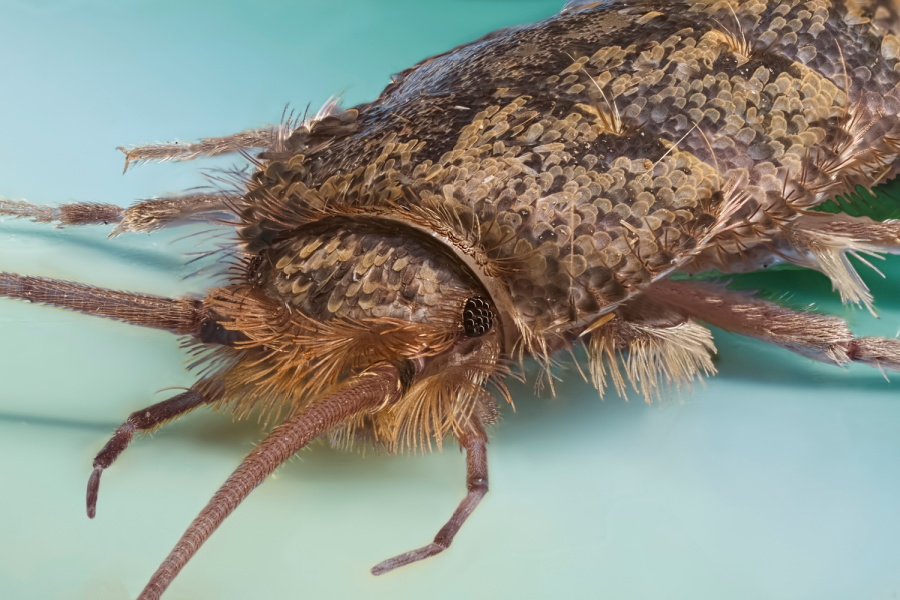
Silverfish can also cause property damage. These creatures prefer dark spaces so they may gather in your storage areas. Laundry rooms, closets, crawl spaces, and other dim places are very inviting to silverfish.
Check your home’s workspaces and sentimental storage to look for damage. Silverfish can leave small holes in fabric, books, cardboard boxes, wallpaper paste, and many other valuable belongings.
They can also eat most fabrics, paper products, and fiber.
Natural Ways To Remove Silverfish
Silverfish are tough and adaptable, but you don’t have to live with an infestation.
There are many safe, natural, and effective strategies to fight silverfish in your home. It’s possible to protect the environment, keep children and pets safe, and still remove silverfish.
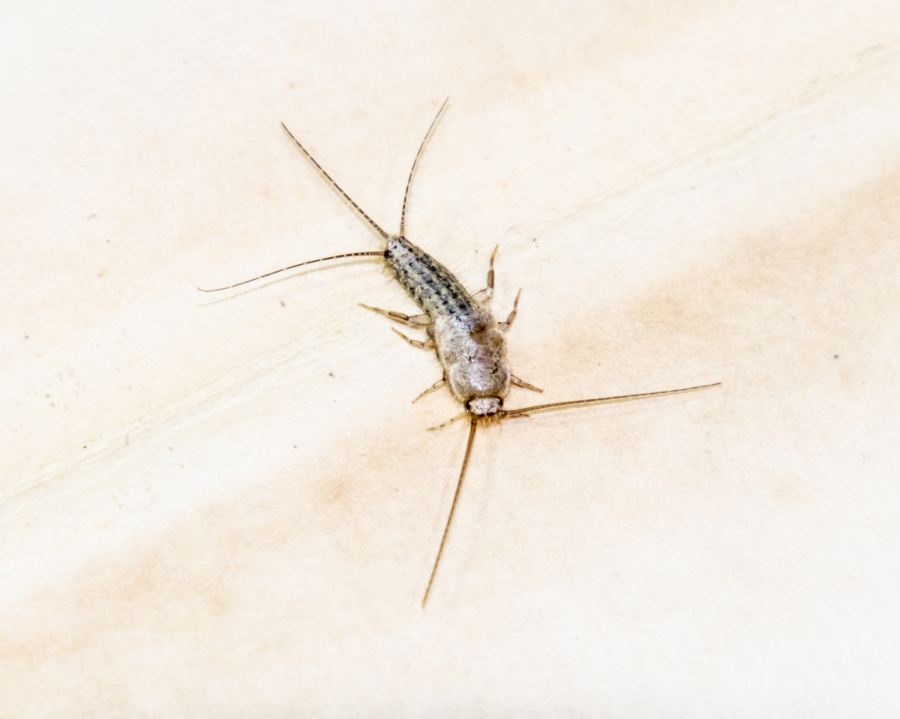
Whether you prefer to repel these creatures, destroy their dens, block them from your home, or even kill them, you have a range of options.
Explore these natural methods to handle silverfish.
Boric Acid
Boric acid is a common insecticide. This chemical is toxic to bugs, insects, and other pests. If you know where silverfish live in your home, you can spray their den with boric acid.
Use a simple spray bottle to coat their favorite hiding spot as well as any nearby cracks, holes, and crevices.
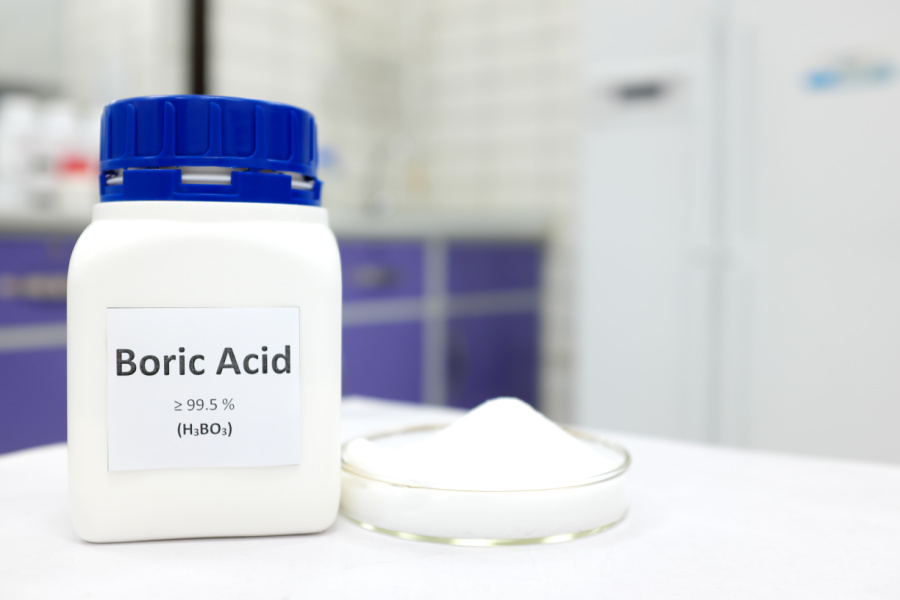
One downside to using boric acid is that’s it’s toxic to people and animals as well as to insects. Families with pets or small children need to be very careful using boric acid.
You should only spray this chemical if you know your children and animals will stay away.
For example, you could use boric acid before taking the family and pets on a day trip out of the house.
If you’re not certain you can keep your loved ones away from boric acid, don’t use it.
Additionally, boric acid doesn’t work well in damp areas.
Moisture can keep this poison from being effective. Since silverfish prefer moist areas of the home, boric acid may not be the best choice.
Diatomaceous Earth
Diatomaceous earth is a great option for households with curious pets and children.

Diatomaceous earth is unique pest control that’s effective on silverfish and many other unwanted insects.
Diatomaceous earth is a powder made from fossilized remains of diatoms, a form of algae. It’s safe for humans and animals but causes major problems for bugs, spiders, and insects.
Diatomaceous earth attacks an insect’s protective outer shell. When a bug touches diatomaceous earth, its protective coating begins to immediately dissolve.
This causes the insect to lose moisture and eventually die.

Water is very important to silverfish. Think about their preference for moist areas and high humidity.
Diatomaceous earth dehydrates silverfish and threatens their survival.
Use diatomaceous earth by sprinkling it along surfaces where you see silverfish. Depending on your infestation, you might spread it on cupboards, closets, bathroom floors, pantry shelves, and more.
This isn’t an instant remedy. Plan on spreading diatomaceous earth every night for a week for the best results.
Essential Oils And Herbs (I get my essential oils here.)
Turn to your home apothecary for natural silverfish repellants. Like many insects, silverfish hate the scent of certain herbs and essential oils. (What can I say, essential oils benefits are aplenty.)

These substances aren’t toxic to silverfish, but the smell does drive away pests. Plus, most herbs and oils are safe to use around children and pets.
Fragrant herbs are great insect repellants.
Try crushing bay leaves and scattering them in areas where you’ve found silverfish. You can also use lavender, rosemary, mint, and other common herbs.
Essential oils are also ideal for fighting silverfish. Citrus, lavender, cinnamon, and other oils are powerful insect repellants.

Unlike diatomaceous earth, herbs and oils aren’t toxic to silverfish. However, these natural substances can help keep a nuisance pest out of your home.

You can also use essential oils and crushed herbs to drive silverfish into homemade traps.
Homemade Traps
If silverfish have already moved into your home, you can capture them with easy homemade traps. DIY traps are a safe and natural alternative to harsh commercial baits. As a bonus, homemade traps are inexpensive.
You can make your own with a few simple materials you already have around the house.

One simple way to trap silverfish involves nothing more than a newspaper and a squirt bottle.
Spray some plain tap water onto a sheet of newspaper, then crumple up the paper and place it where you’ve seen silverfish. These insects love moisture, dark places, and fibrous materials like paper. The newspaper trap offers food, water, and shelter all in one location.
Give the silverfish a few days to move into the paper trap. Then quickly pick it up and place it into a bag.

Sticking the entire trap into a bag prevents the silverfish from being able to run away.
Try to do this chore in the middle of the day, when the bugs are likely to be sleeping. Once the paper is bagged, you can throw it out, burn it, or return the bugs to nature far away from your home.
Dry Out Their Homes
Silverfish flock to damp, moist, and wet locations. You can discourage silverfish from moving into your home by keeping your space dry.
Look for leaky pipes and entry points that might collect condensation, such as HVAC ducts.
If you can keep silverfish out of your home in the first place, you’ll have a much easier time avoiding infestations.

You should also consider the wet parts of your home. Bathrooms, laundry rooms, and kitchens often collect moisture. Aim to keep these spaces as dry as possible.
This might be as easy as turning on the ventilation when you are showering, or opening a window while doing the dishes. If your space seems especially wet, you can explore buying a dehumidifier.

These appliances help you monitor the moisture levels in your home. They can be very useful for people living in warm, wet climates.
Improve Your Food Storage
Take a look through your kitchen and pantry to see if your food storage needs some improvement. Silverfish love carbohydrates, starchy foods, and anything with plant fibers.
Open cereal boxes or bags of pet food offer perfect feeding grounds for silverfish. Dry foods and ingredients such as sugar and flour can also attract silverfish.

Keep food in airtight containers once it’s opened to keep silverfish away.
Unfortunately, sealed food packaging can also attract silverfish and other pests. Silverfish can thrive on a diet of paper and cardboard. They might try to eat boxes, bags, cartons, and other unopened packages.
If you’re fighting a silverfish infestation, try to keep paper out of their reach. Consider moving all your food into airtight storage containers as soon as you bring it home.

This extra step keeps silverfish and other pests out of your stocked pantry.
You can also store food in the fridge or freezer while you’re dealing with infestations. Many pantry staples can be safely kept in the refrigerator.
This strategy will take up space in your fridge but can keep your food out of harm’s way while you deal with your silverfish problem.
Getting Rid Of Silverfish Forever
Silverfish are a common but unfortunate problem. These pests are adaptable, resilient, and long-living. If you’re struggling with silverfish, you do have options besides dangerous commercial chemicals.
Natural remedies such as diatomaceous earth, herbs, and essential oils can discourage or kill silverfish.
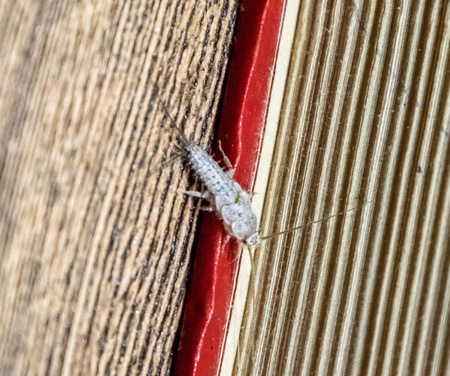
You can also explore some basic lifestyle changes to lower your silverfish risk.







